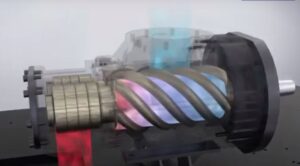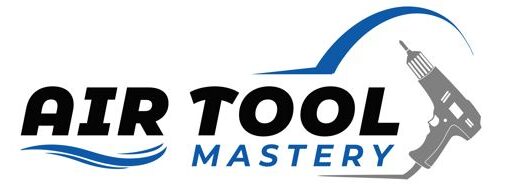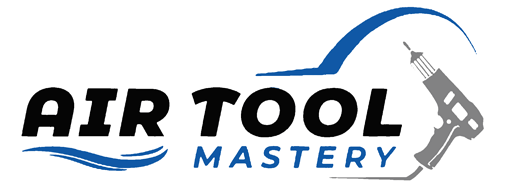Direct drive air compressors, as their name suggests, have a crankshaft that is directly connected to the compressor motor. In this arrangement, there are no belts used to transfer power from the motor to the crankshaft.
If you’re looking to buy an efficient, straightforward, and reliable solution for your air compression needs, the direct drive air compressors are indeed a worthy pick.
Since they cut out the middleman (belts and pulleys) which are potential power leaks, they are powerhouses of efficiency, and for that reason, they have won the hearts of many.
Simply put, they cut out the middleman – in this case, the belt or pulley system – and deliver power directly from the motor to the compression mechanism via a crankshaft.
This direct connection doesn’t just make for an impressive-sounding name; it translates into tangible benefits. It means fewer components to worry about and less potential for mechanical hiccups.
Plus, it leads to a more compact design, perfect for those tight spaces or mobile applications.
How Direct Air Compressors Work

Since I already gave a brief overview of the working mechanism, let’s delve a bit deeper into how exactly direct air compressors operate.
As mentioned earlier, instead of using belts and pulleys to transfer power from the motor to the compressor, they use a crankshaft. This crankshaft is connected directly to the motor on one end and to the compression mechanism on the other.
So, when the motor starts running, the crankshaft rotates and transfers this motion directly to the compression mechanism, which compresses air and sends it out through a discharge valve.
This process continues until the desired pressure is reached. Once the pressure reaches its limit, the compressor will automatically shut off to prevent damage or over-pressurization.
What is a direct air compressor?
A direct air compressor is a type of mechanical device that is used to compress air directly without any intermediate fluid or mechanism. This process is accomplished through the direct action of a piston within a cylinder, drawing in air during the piston’s downstroke and compressing it during the upstroke. The compressed air is then stored in a tank for various uses, ranging from inflating tires to powering pneumatic tools. These compressors are known for their simplicity, efficiency, and cost-effectiveness, making them suitable for both residential and commercial applications.
What are the three types of air compressors?
1. Reciprocating Air Compressors
Reciprocating air compressors use pistons driven by a crankshaft to compress the air. These types of compressors are available in single-stage or multi-stage configurations, where the latter offers higher pressures and efficiency by compressing the air in several stages. Reciprocating compressors are ideal for small to medium-sized applications, such as automotive and woodworking workshops.
2. Rotary Screw Compressors
Rotary screw compressors consist of two meshing helical screws, known as rotors, which compress air when it flows through the screw paths. These compressors are known for their durability, high efficiency, and ability to provide a constant flow of compressed air, making them suitable for large industrial applications requiring high volumes of compressed air.
3. Centrifugal Compressors
Centrifugal compressors increase air pressure by using the centrifugal force generated by a rotating impeller. The air enters the compressor at the center of the impeller, which accelerates it radially outward into a diffuser where the air’s velocity is converted into pressure. These compressors are most commonly used in high capacity applications like HVAC systems, gas turbines, and large refrigeration units, where they offer efficient and reliable performance at relatively low maintenance costs.
4. Axial Compressors
Axial compressors are not as commonly used as the other types but are vital in specific high-speed, high-pressure applications. These compressors work by drawing air through a series of rotor blades, where it is compressed in a consecutive manner as it passes through each stage of blades. Axial compressors are known for their high efficiency and large volume flow rates, making them ideal for use in jet engines, high-speed ship engines, and certain large industrial processes.
5. Scroll Compressors
Scroll compressors, or spiral compressors, consist of two spiral-shaped scrolls where one remains stationary, and the other orbits eccentrically without rotating, thereby trapping and compressing pockets of air. These compressors are valued for their quiet operation, reliability, and efficiency. They are commonly found in HVAC systems, refrigeration, and also in some automotive air conditioning systems.
Which type of compressor is most efficient?
The efficiency of a compressor depends largely on its application and operational conditions. However, axial compressors are often heralded for their superior efficiency, particularly in applications requiring high flow rates and continuous operation, such as in aerospace and industrial gas turbines. Their design allows for a high compression ratio and a wide range of flow rates, making them exceptionally versatile.
Nevertheless, for lower capacity requirements and applications valuing noise reduction and space-saving, scroll compressors may provide the most efficient solution. Ultimately, the choice of compressor should be determined by a thorough analysis of the specific requirements, including desired pressure ratio, flow rate, and efficiency, as well as environmental and economic considerations.
What is the difference between direct and belt compressor?
The primary difference between direct and belt-driven compressors lies in their method of power transmission. Direct-drive compressors have a motor directly connected to the compressor’s crankshaft, leading to fewer moving parts and typically a more compact design. This direct connection ensures that the motor’s power is efficiently transferred to the compressor, reducing energy losses that might occur with other methods of power transmission.
Belt-driven compressors, on the other hand, use a system of belts and pulleys to connect the motor to the compressor. This setup allows for flexibility in adjusting the load by changing the pulley sizes, which can optimize the compressor’s operation and efficiency under varying conditions. However, belt-driven systems may require more maintenance than their direct-drive counterparts, including regular belt inspection and replacement, as well as potential alignment issues.
Which is better, direct drive or belt?
When determining whether a direct drive or belt-driven compressor is the better option, several factors must be considered. Direct drive compressors are renowned for their simplicity and reliability. With fewer moving parts, they are less prone to wear and tear, leading to lower maintenance costs and longer life spans. This makes them well-suited for applications where durability and minimal downtime are critical.
On the other hand, belt-driven compressors offer unparalleled flexibility. The ability to change pulley sizes for optimal operation makes them ideal for applications that require variable air flow rates and pressures. This adaptability, however, comes at the cost of increased maintenance. The belts and pulleys may need regular adjustments and replacements to ensure peak performance, which can lead to higher operational costs over time.
Ultimately, the choice between direct drive and belt-driven compressors depends on the specific needs and constraints of the application. Factors such as the required air flow rate, pressure, space considerations, maintenance capabilities, and budget all play crucial roles in this decision.
What is a hermetic compressor?
A hermetic compressor, also known as a sealed compressor, is an air conditioning or refrigeration compressor with its motor and compressor mechanism completely sealed within the same housing. This design prevents any exchange of gas or fluid between the compressor internals and the surrounding environment, ensuring that no refrigerant leaks out of the system. One of the main advantages of hermetic compressors is their low maintenance requirement, due to the motor and compressor being inaccessible and thus protected from external contaminants and dust.
They are typically more compact and less noisy compared to open or semi-hermetic compressors, making them a popular choice in residential and small commercial applications where space is at a premium and noise reduction is desired. However, if a hermetic compressor fails, it often cannot be repaired and must be completely replaced, which can be more costly and less environmentally friendly in the long term.
Which belt is used for compressor?
The type of belt used for a compressor largely depends on the specific design and requirements of the compressor system. For industrial applications, V-belts are commonly utilized due to their simplicity, efficiency, and cost-effectiveness. V-belts are designed to fit snugly into matching grooves on the pulleys, providing a secure and stable drive system that minimizes slippage and alignment issues. They are well-suited for moderate to high-speed operations and can handle a significant amount of power transmission.
Poly-V belts, or serpentine belts, are another option, known for their ability to handle high-speed drives and large power transmission over a small surface area. Their multi-rib design offers a greater contact surface area with the pulley, which results in improved power transmission efficiency and reduced wear.
This makes Poly-V belts an ideal choice for high-performance compressor systems that require reliable operation under demanding conditions. Choosing the right belt involves considering factors such as the compressor’s power, speed, operational environment, and maintenance requirements to ensure optimal performance and longevity of the system.
A video review of a direct air compressor
Applications of Direct Air Compressors
Industrial and Manufacturing Applications
Direct air compressors are integral in many industrial and manufacturing applications. These range from powering pneumatic tools such as grinders, sanders, and drills, to providing air for process applications such as packaging, material handling, and spray painting.
Automotive and Garage Uses
In automotive and garage settings, direct air compressors are often used to power impact wrenches, tire inflators, and paint sprayers. Their ability to deliver high pressure makes them suitable for tasks like removing lug nuts or inflating tires.
Construction and Building Sites
At construction and building sites, direct air compressors serve a multitude of purposes. They power pneumatic tools like jackhammers, nail guns, and concrete vibrators, aiding in tasks from demolition to framing and concrete laying. Their robust design allows them to operate effectively in harsh, dusty environments typical of construction sites.
Home and DIY Projects
For home and DIY projects, direct air compressors are highly praised for their compact size, portability, and affordability. They can easily power a variety of tools such as brad nailers for carpentry, airbrushes for painting, and even inflate sports equipment or pool toys. Their simplicity and ease of use make them an excellent addition to any home workshop or garage.
Maintenance Tips For Direct Air Compressors
Regular Inspection and Cleaning
Maintaining a direct air compressor begins with regular inspection and cleaning. Be sure to examine the compressor for any signs of wear and tear, leaks, or damaged parts. When inspecting, you should pay attention, particularly to the air filter, as a clogged filter can reduce the efficiency of the compressor.
Proper Lubrication
The next crucial aspect of maintaining your direct air compressor is proper lubrication. A well-lubricated compressor runs smoother and lasts longer. The motor bearings and other moving parts of the air compressor should be adequately lubricated with the correct grade of oil as recommended by the manufacturer.
Regular Draining of the Receiver Tank
The third point to consider is the regular draining of the receiver tank. As the air compressor operates, it will accumulate moisture, especially in humid environments. If the water is not regularly drained from the receiver tank, it can lead to corrosion, shortening the lifespan of your compressor.
Timely Replacements and Repairs
Lastly, timely replacements and repairs add to preserving the longevity of your direct air compressor. Components such as the air filter, oil filter, and belts should be replaced as per the manufacturer’s guidelines.
If any part of the compressor is damaged or not functioning correctly, it should be repaired or replaced promptly. On the same note, always use genuine parts from the manufacturer to ensure compatibility and reliability.
Conclusion
Direct air compressors are essential tools in various industries, and their proper maintenance is crucial to ensure optimal performance and longevity. Unlike belt-driven compressors, direct air compressors have minimal maintenance requirements, making them a popular choice for many businesses.
With regular inspections, proper lubrication, draining of the receiver tank, and timely replacements and repairs, your direct air compressor can last for many years to come. So be sure to follow these maintenance tips and enjoy the reliable and efficient performance of your direct air compressor.

